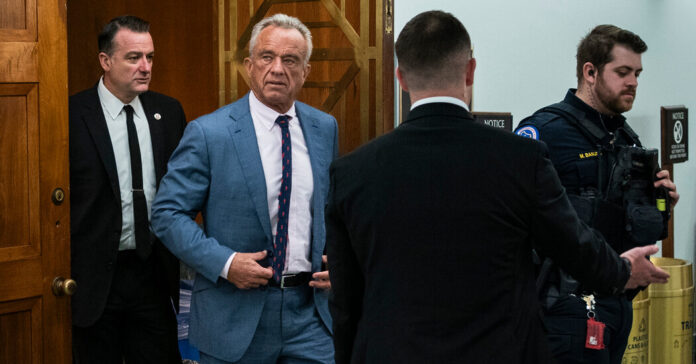In a move that has triggered a wave of concern among health professionals and lawmakers, the Trump administration has shut down CDC’s infection control committee, with the closure taking effect quietly in late March 2025. News of the shutdown became public only recently when four former members confirmed they were informed on Friday, leaving many wondering: how did this happen without national attention?
This committee was one of the CDC’s critical internal bodies, responsible for evaluating infection control measures, coordinating state efforts, and responding rapidly to outbreaks. Its sudden removal raises an urgent question: Who is steering the ship in future epidemics?
Why the Trump Administration Has Shut Down CDC’s Infection Control Committee Now
The CDC’s infection control committee wasn’t just another bureaucratic body—it was the pulse-checker of America’s disease defenses. Its shutdown comes during a time of major internal changes across public health departments.
Key reasons behind the move include:
- A broader plan to restructure federal health agencies, cutting overlap and “streamlining” operations.
- Massive budget reductions and workforce downsizing across CDC divisions.
- A shift in focus toward privatization and decentralization of public health responsibilities.
According to internal sources, this is part of a sweeping transformation of the Department of Health and Human Services, reducing the number of divisions while eliminating programs that were seen as “non-essential” by the administration.
But was infection control non-essential?
What We Lose When Committees Disappear
Disbanding the infection control committee does not just leave a staffing gap—it leaves the country vulnerable.
Here’s what we lose:
- Expert Coordination: These committees guided rapid response efforts during past outbreaks like Zika, Ebola, and COVID-19.
- Policy Feedback Loop: Frontline data helped shape federal responses. That feedback is now silenced.
- Training Infrastructure: Programs that prepared future epidemiologists and lab workers have also been hit, cutting the workforce pipeline.
More troubling is the timing. With global travel resuming and new viral strains surfacing, the U.S. health system is now operating with a weaker warning system.
Political and Public Response
So far, the public reaction has been a mixture of confusion and frustration. While some Trump administration supporters argue this is part of needed government efficiency, public health advocates see it differently.
State-level health departments, already stretched thin, are now expected to handle more responsibility without federal coordination. Some Democratic-led states have openly criticized the move, claiming it undermines national disease response capabilities.
This is not just a policy change—it’s a philosophical shift. The federal government is stepping back from direct disease management, placing more weight on local agencies that may not be equipped or funded for it.
What’s Next: Are We Prepared?
The big question now is: What happens when the next public health threat emerges?
Without the CDC’s infection control committee, response efforts may face delays and inconsistent practices across states. Here’s what experts warn could result:
- Delayed outbreak detection
- Conflicting public guidance
- Limited national coordination during crises
- Lower public trust in CDC communications
Already, reports suggest internal CDC morale is low. Major disease control programs like vaccine tracking, chronic illness surveillance, and lab-based research have lost staff or been consolidated beyond recognition.
`1Read Here: Kim Kardashian Stuns at Met Gala 2025
Final Thoughts: A Risky Gamble
The fact that the Trump administration has shut down CDC’s infection control committee may not spark headlines every day, but it could be one of the most consequential decisions for America’s health future. This is not about politics—it’s about preparedness.
Infectious diseases don’t wait for political cycles. They spread fast, often without warning. When that happens again—and it will—we may look back on this quiet March decision and wonder why more people didn’t sound the alarm.
Until then, doctors, public health workers, and ordinary citizens are left to fill the gaps—hoping the next health emergency doesn’t come before we’re ready.
